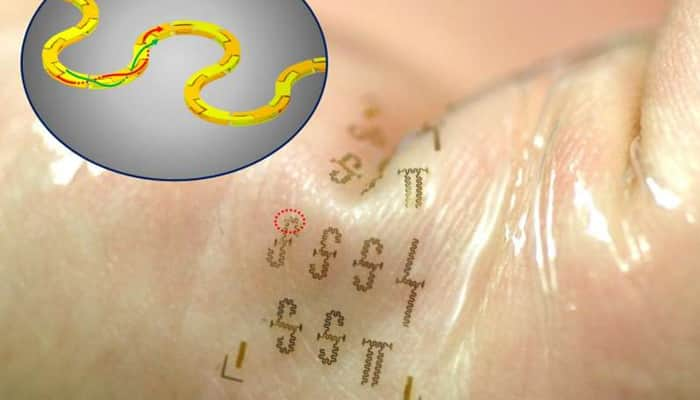Washington: Smart wearable devices are evolving fast, becoming so much a part of our daily lives - from monitoring our health to doing some amazing task such as purifying the air we breathe.
Now, a team of scientists has created the world's fastest stretchable, wearable integrated circuits, an advance that could drive the Internet of Things and lead to a much more connected, high-speed wireless planet.
The platform, led by Zhenqiang "Jack" Ma, the Lynn H Matthias Professor in Engineering and Vilas Distinguished Achievement Professor in electrical and computer engineering at University of Wisconsin-Madison, may help manufacturers expand the capabilities and applications of wearable electronics - including those with biomedical applications - particularly as they strive to develop devices that take advantage of a new generation of wireless broadband technologies referred to as 5G.
With wavelength sizes between a millimetre and a metre, microwave radio frequencies are electromagnetic waves that use frequencies in the 0.3 gigahertz to 300 gigahertz range. That falls directly in the 5G range.
In mobile communications, the wide microwave radio frequencies of 5G networks will accommodate a growing number of cellphone users and notable increases in data speeds and coverage areas.
In an intensive care unit, epidermal electronic systems (electronics that adhere to the skin like temporary tattoos) could allow health care staff to monitor patients remotely and wirelessly, increasing patient comfort by decreasing the customary tangle of cables and wires.
What makes the new, stretchable integrated circuits so powerful is their unique structure, inspired by twisted-pair telephone cables, researchers said.
They contain, essentially, two ultra-tiny intertwining power transmission lines in repeating S-curves.
This serpentine shape - formed in two layers with segmented metal blocks, like a three dimensional puzzle - gives the transmission lines the ability to stretch without affecting their performance.
It also helps shield the lines from outside interference and, at the same time, confine the electromagnetic waves flowing through them, almost completely eliminating current loss.
Currently, the researchers' stretchable integrated circuits can operate at radio frequency levels up to 40 gigahertz.
Unlike other stretchable transmission lines, whose widths can approach 640 micrometres, the new stretchable integrated circuits are just 25 micrometres thick.
That is tiny enough to be highly effective in epidermal electronic systems, among many other applications, researchers said.
"We've found a way to integrate high-frequency active transistors into a useful circuit that can be wireless," said Ma.
Researchers published details of these powerful, highly efficient integrated circuits in the journal Advanced Functional Materials.
(With PTI inputs)
















